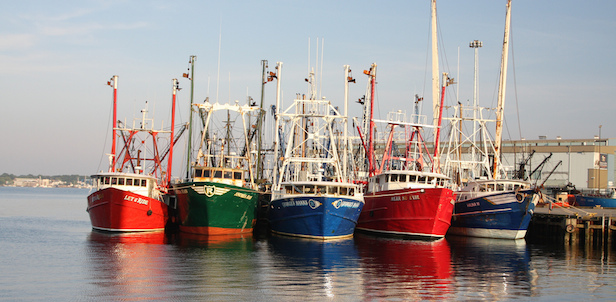
The goal of this research was to assess the New England groundfish fishery’s constraints and uncover opportunities for fundable initiatives that might ensure both its economic viability, as well as support the conservation management successes secured through sector management. This report was prepared for the New Venture Fund’s New England Finfish Finance Needs Assessment project by Future of Fish and Neel Inamdar, with funding from the Gordon and Betty Moore Foundation.
The New England groundfish fishery has experienced decades of decline, and the communities that rely on it for economic sustenance have faced continual crisis. In 2010, the New England Fishery Management Council implemented a system of sector management with the intention of reversing those trends. However, achieving overall improvements in stock health and fishers’ livelihoods has proved challenging. Through in-person and telephone interviews with 100 fishers, seaport businesses, and financial services institutions, we conclude that there are a number of opportunities for foundations and financial institutions to engage with the fishery now as it continues to adjust to conditions under sector management, as well as to invest in philanthropic and business initiatives that show promise for bringing the fishery back to prosperity.
Value chain constraints
The inability to catch ample volumes of fish—whether because of natural causes or falling quotas—was universally listed as a primary challenge by fishers, vessel servicers, auctions, processors, distributors, and financial institutions alike. Other common concerns of fishers included: high cost of leasing quota; high operating costs; unpredictable and insufficient dock prices; competition from imports; vessels in disrepair; poor portside infrastructure and market access; and psychological stress. The challenges of port-based businesses often mirrored those of fishers, especially because their profitability depends on the viability of the fleet they serve. Significantly, a number of value chain participants have been able to divorce themselves from these challenges by turning to imports.
“I already caught my full quota for the year. It took me 12 days to do that.”
Available financing
Debt financing is widely available in the region. While the majority of financial institutions we spoke with accept a variety of collateral, few are able to accept permits, or do so at steeply discounted values. Equity investment options remain limited, compared with debt financing, particularly as equity is continuing to leave the fishery in the form of fleet reductions. Grants and other financial instruments, such as tax credits, also exist in this market; however, those are typically targeted at enhancing collaboration and innovation at a community level, as opposed to at a company or corporate level.
The negative feedback loop
Biomass decline, stock health uncertainty, and stock assessment variability all affect the ability of fishers to land sufficient volumes. Those conditions not only reduce fishers’ desire for additional debt, they are also significant barriers to offers and acceptance of financing. In fact, they are leading drivers to a self-reinforcing negative feedback loop (adapted from M. Odlin, 2013) constraining the value chain and causing stagnation of capital resources for value chain participants, particularly fishers.
Opportunities for intervention
- Facilitate the transition to effective quota management at the fisher level.
- Streamline and enhance policies to build more efficient market structures and regulation.
- Support the development of new, innovative, early-stage development opportunities and the establishment of potentially scalable business models.
Opportunity 1
Opportunity 2
Opportunity 3
Opportunity 4
Opportunity 5
Opportunity 6
Opportunity 7
Opportunity 8
Next steps
Given the diversity of the challenges and capabilities of particular fishers, sectors, and ports, we do not expect that every opportunity area will be feasible for every entity involved in the fishery. Rather, they are starting points for dialog and for the development of solutions that can be customized to meet specific needs and circumstances. Already there are examples of successful initiatives in the region, and those are in need of support and scaling. However, to create system-wide change, it is necessary to intervene at multiple levels in the value chain simultaneously. As they stand, the opportunity areas require further refinement—potentially through stakeholder convenings and pilot programs—before full pursuit. Once tested, if the opportunities are to move from proof-of-concept to established business models capable of scaling (and thereby attracting private capital, as has occurred in other markets), they will require grant support. While the outcomes of the opportunity areas presented will be affected by the future status of groundfish stocks, they offer systemic resolutions that will only be magnified in a recovery. Thus, efforts should be made to engage relevant parties proactively in the interim.




